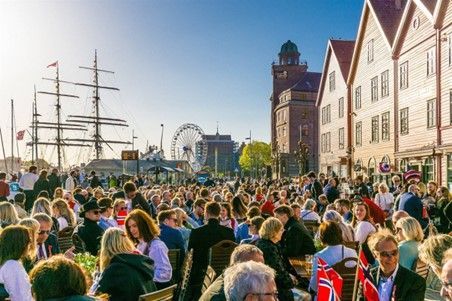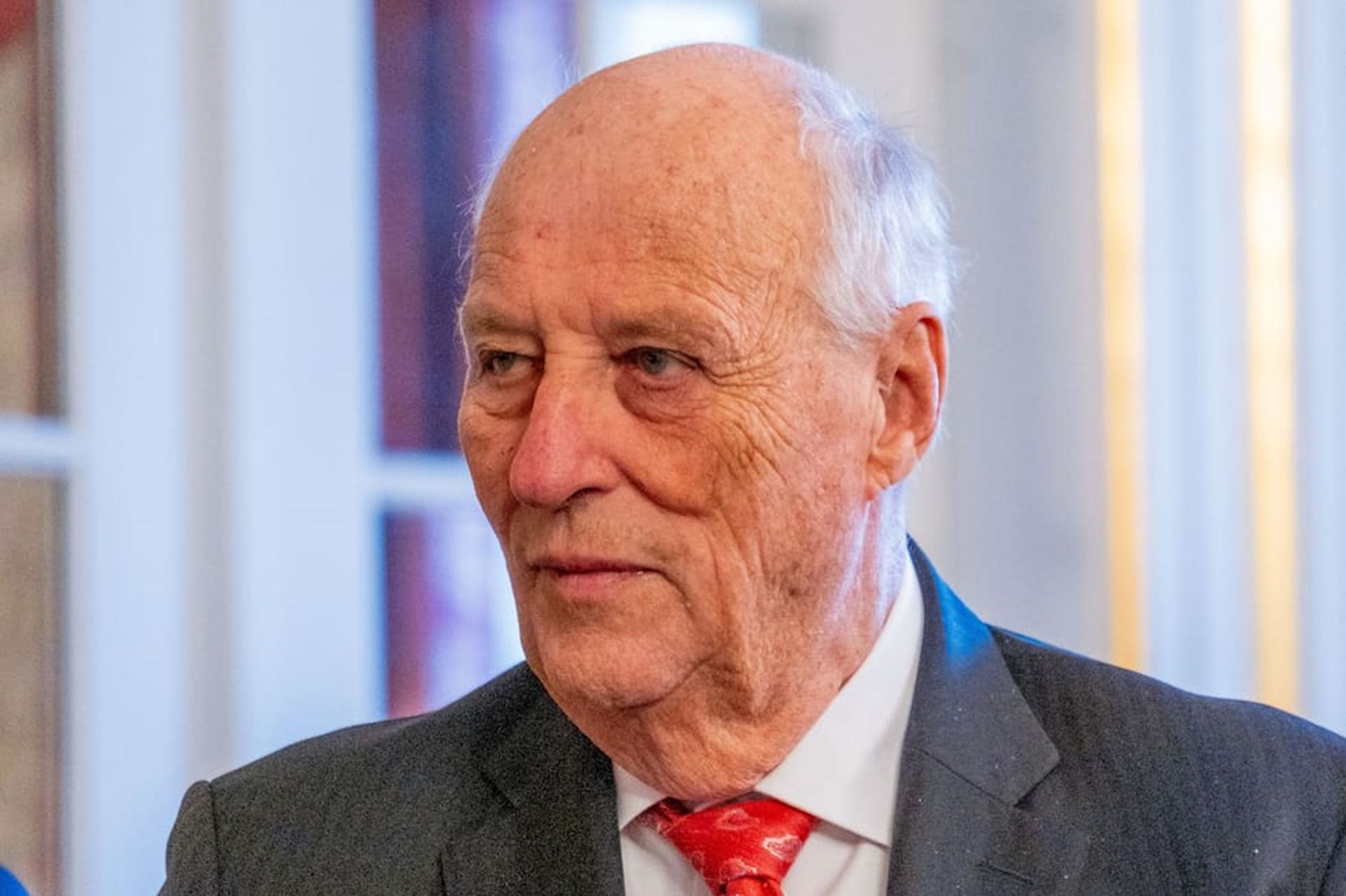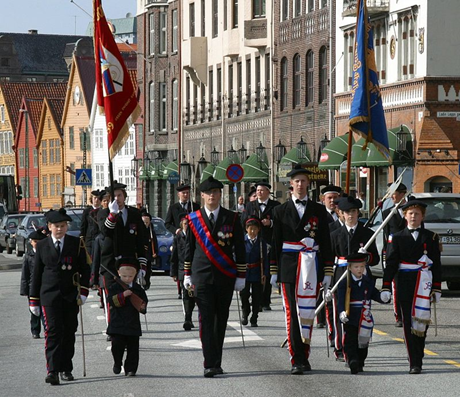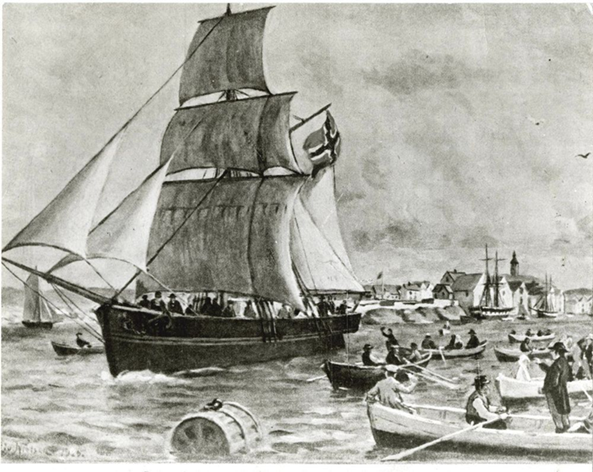


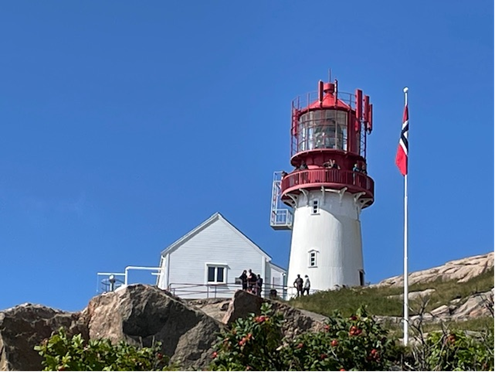

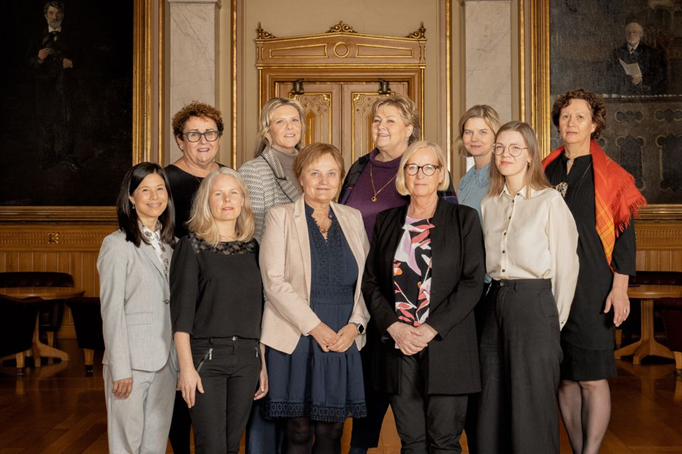

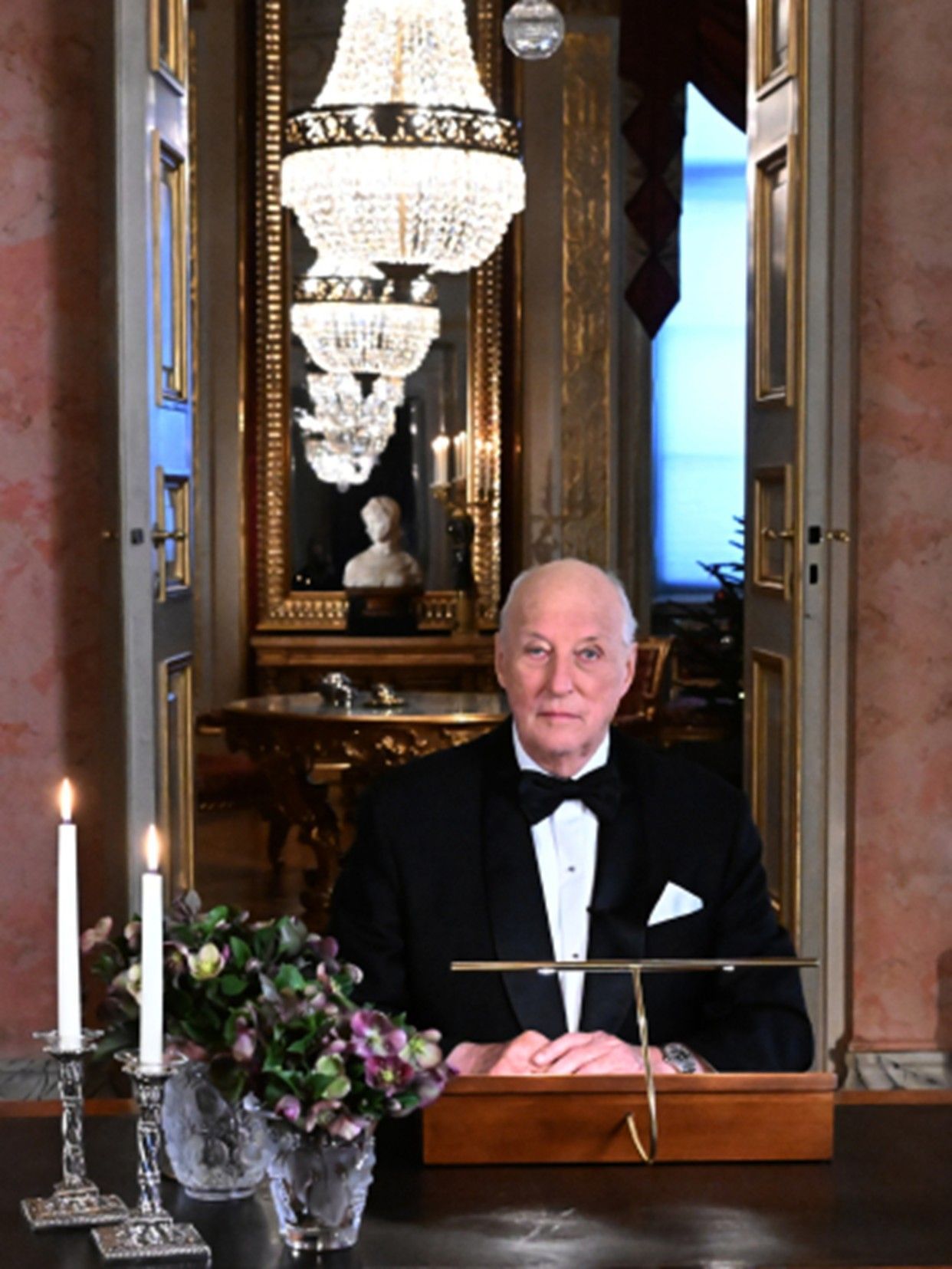
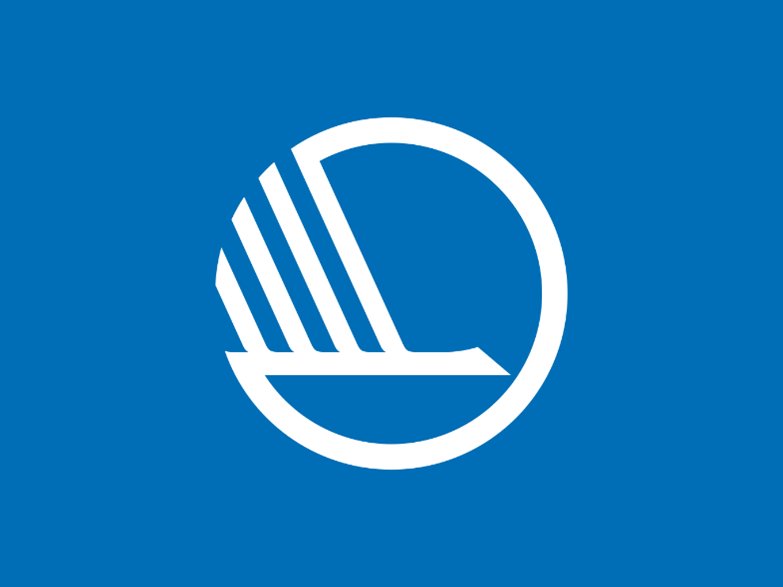
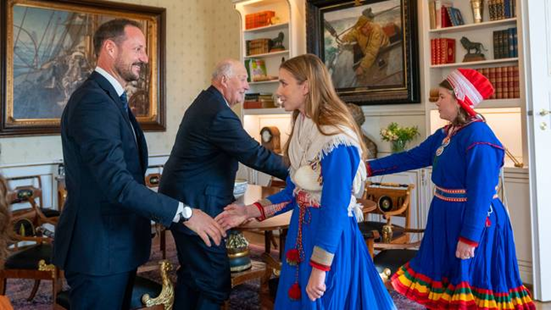
I certainly hope to see many of you this year at Carderock Park on May 12th to celebrate the Norwegian Constitution Day. Why do we celebrate May 17th? Norway's Constitution was unanimously adopted by the National Assembly at Eidsvoll on May 16, 1814, and was signed the following day, May 17, 1814. The actual celebration of Constitution Day began in 1836 when the day was instituted as a public holiday. People are dressed up in their absolute best clothes and, if you are lucky enough to have a bunad -- the Norwegian National costume -- May 17th is the day to wear it. The 17th of May is often called Children's Day, as opposed to many other countries celebrating their constitution day with military parades. The first children’s parade was arranged in Oslo in 1870, after an initiative by the famous poet and Nobel Prize winner, Bjørnstjerne Bjørnson. The first parade was for boys only; girls participated starting in 1889. School children and school bands go together in the parade, where the children wave Norwegian flags and shout hurray or sing along when the band plays. Everyone else stands along the parade route and watches and waves to the children. It is a full day celebration, from early morning to late evening.
Photo: Visit Bergen / Robin Strand
Photo of sour cream porridge from Gladkokken, one of Norway’s most popular food blogs.
King Harald (87) ended his sick leave on Monday April 22nd. (Photo: Emilie Holtet/NPK)
Buekorpset in Bergen armed with ceremonial toy rifles, swords, and halberds. Photo: Nina Aldin Thune
You will find children’s parades all over the country, in small communities and larger towns. The Constitution Day in Norway is an official holiday where children are the honorary guests! The day often starts at 6:30 am with a cannon salute if one is available, and the Norwegian flag will be raised. It is the local communities’ responsibility to set their official program, but it generally starts at 7 am, often with a speech locally, crowning of monuments, morning worship at churches and music by school marching bands. Many families will use the early morning to iron their children’s linen skirts as well as the small flags to be used at the children’s parades. After the children's parade, there are celebratory speeches and celebratory services in the churches. Afterwards, it is common to arrange games and other entertainment for the children in the school yard or the surrounding area. Ice cream, soft drinks and sausages top the children's party menu, and it is an unwritten rule for many that the children can eat as much ice cream as they can stomach on this one day.
One of the most recognizable and highly anticipated pictures every year is undoubtedly the King and his family waving to the children in the Oslo parade from the balcony of the Royal Palace. Hopefully, we will get a glimpse of the Royal family this year since King Harald (87) has been sick since February, after a vacation in Malaysia. In addition to an infection, he returned to Norway with a temporary pacemaker to help his heart during the long travel. Once back in Norway, he got a permanent pacemaker at the National Hospital in Oslo. Since then, he has been on sick leave, spending time with his wife, Queen Sonja, at their farm at Bygdøy, just outside the City. All Norwegians are concerned when the King is sick, so we rejoiced at the news that the King had moved back to the Royal Castle, was going back to work on April 22nd and would be ready to wave at the people on May 17th.
The main program for this holiday may differ according to local traditions. The parades might include a people's parade (folketog), which features local workplaces, groups and societies. Many Norwegians volunteer in their communities, so they might have trouble deciding who to march with! In other places, the parades end with the high school graduates (russetog), who often look a little worse for wear as “russefeiring” (several weeks of celebration something like Spring Break) comes to an end on Constitution Day. About 42,000 young people graduate from Norwegian upper secondary schools each year.
As warmer weather comes to the beautiful landscapes of Norway, children of all ages are filled with national pride. Norway celebrates Labour Day on May 1st and May 8th is Liberation Day marking the end of Norway’s occupation during World War II. Enthusiasm grows for the 17th of May with its vibrant parades and lively gatherings. Everyone wants to be part of the celebration!
In Norway’s second largest city, Bergen, the citizens wake up at 7 a.m. to salutes and a Morning Procession. Next, everyone pauses for a Bergen tradition --a big May 17th breakfast at home or in one of the City's hotels and restaurants. This could include Rømmegrøt, a fatty porridge made with sour cream, milk, and a bit of flour served with butter, sugar and cinnamon. This dish has long traditions in Norway and is often served on holidays at the same time as cured meats such as fenalår, a salted and dried leg of lamb dating back to the Vikings. This is Norway’s version of the serrano ham eaten in Spain or Parma ham enjoyed in Italy.
Some official recognition and commemorative mentions take place, and then it is time for the biggest feature. TWO parades -- the Main Procession and the Flag Parade – at the same time going in opposite directions along the same route! Another unique thing about Bergen’s parade is the inclusion of the Buekorps ("Bow Corps" or "Archery Brigade") formed in the middle of the 19th century in many Norwegian cities but today found only in Bergen. Buekorps is an organization for and by children where exercise, marching, sports, trips and outings are essential elements and where the officers support the young soldiers. In earlier times, it was common to distinguish between Saturday bow corps and Sunday bow corps. Those who played in the Saturday bow corps were generally from better-off families who could take Saturdays off. The Sunday bow corps were for those who only had Sundays off. Originally, only boys joined the archery corps; the first girl buekorps was formed in 1991. Today, the archery corps consists of both girls and boys and has activities on many different days of the week. The bow corps are neutral in terms of politics , religion and ethnic affiliation. The bow corps do both music and various sports, and the bow corps teach the children a lot about discipline. It's a sign of spring in Bergen when you hear the bow corps drumming through the City's streets and lanes!
After this, there are speeches, singing, music, concerts, games, and entertainment - until it all ends with fireworks on the “Festplassen” (city gathering place) just before midnight.
I have so many memories of Constitution Day, first of all playing in the school marching band for many years of my childhood with not much time for anything else. Vigdis and I have celebrated 17. May in my hometown of Fredrikstad and in Oslo, London and Washington D.C. When we had our own children, the festivities were focused on them. After they were grown, I was the Chair for the event for many years in D.C. During that time, the one I probably remember best – the first time our granddaughter Elma walked in the Oslo parade – took place, and we had to be in D.C. It was a very sad celebration for us!
We all look forward to celebrating this year’s Constitution Day whether in Norway or somewhere else in the world. In Washington DC, the May 12th event in Carderock Park might be one of multiple events during the week for many of you. If you would like to see the local celebrations in Norway, I recommend using Facebook and the Norwegian TV always has great coverage.
In the beginning of April, we heard that the King’s sick leave was extended for two weeks. Crown Prince Haakon carried out his father's duties in the latter's absence, but just before I finished this article, we received the press release that the King would resume his constitutional duties as head of state. He will work less but maintain what he has said all along that he has taken an oath to the Storting, and it lasts for life. This is how King Harald answered when he was asked in January if he has considered giving up the throne after the queen in Denmark, Queen Margrethe, did so. Even though he will reduce the workload, he will still conduct meetings and audiences at the Palace and continue to go on official visits around the country. In the press release they stated that "However, the king will make adjustments to his program in the future due to his age. This will entail a permanent reduction in the number and scope of activities the king participates in. Practical arrangements will also be made in the implementation of his official activity."
That said, the royal palace listed three separate meetings in the King’s schedule for Monday, April 22nd with senior military officers, including the head of Norway's armed forces. I can only imagine the questions he had about all the conflicts going on in the world. On Thursday he was set to meet Norway's foreign minister and receive new ambassadors from Argentina, Sweden and Costa Rica. Foreign ambassadors cannot assume their duties in Norway until they have met the King in a so-called solemn audience. A weekly meeting with the government was scheduled for last Friday. King Harald leads the Council of Ministers at the Palace every Friday at 11a.m., and it is one of the most important tasks the King performs.
The King performed 431 assignments last year including trips and visits around Norway, official trips abroad, audiences at the Palace, Cabinet meetings, receptions and formal audiences. According to the Constitution, the King must lead the Council of Ministers and perform the ceremonial opening of the Storting every autumn. Europe's oldest monarch has long been working full time for the kingdom.
We all have an extra reason to celebrate this year, appreciating our great King and his family, and hopefully seeing them all back on the balcony waving to us.Happy 17th of May!


